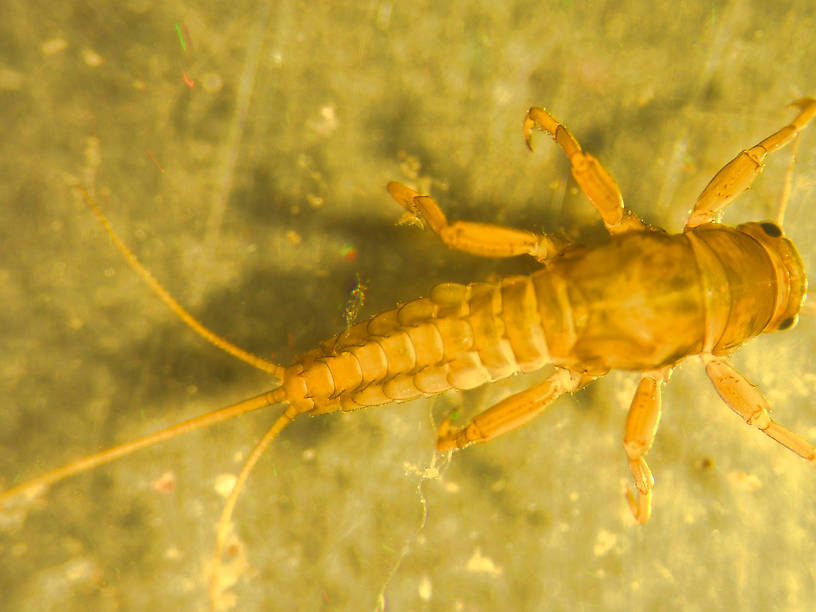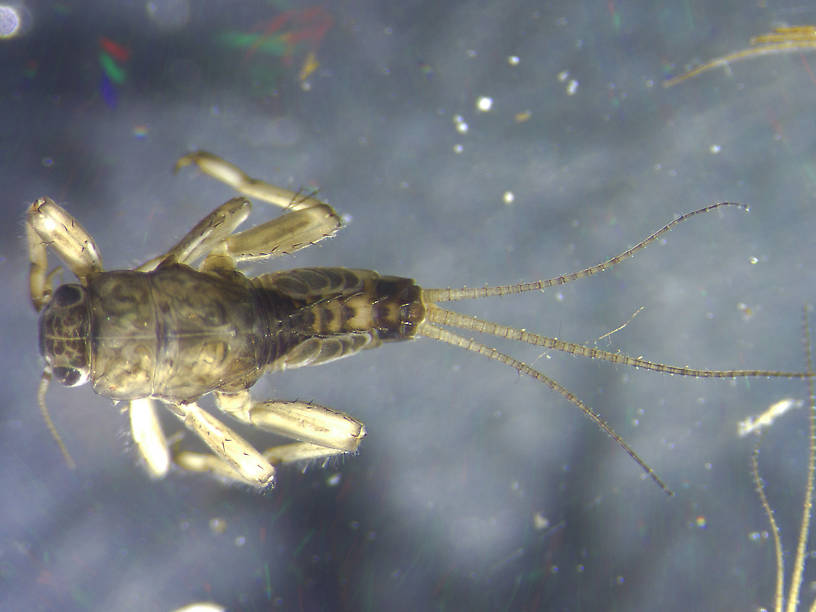
Salmonflies
Pteronarcys californica
The giant Salmonflies of the Western mountains are legendary for their proclivity to elicit consistent dry-fly action and ferocious strikes.
Featured on the forum

This one seems to tentatively key to Holocentropus, although I can't make out the anal spines in Couplet 7 of the Key to Genera of Polycentropodidae Larvae nor the dark bands in Couplet 4 of the Key to Genera of Polycentropodidae Larvae, making me wonder if I went wrong somewhere in keying it out. I don't see where that could have happened, though. It might also be that it's a very immature larva and doesn't possess all the identifying characteristics in the key yet. If Holocentropus is correct, then Holocentropus flavus and Holocentropus interruptus are the two likely possibilities based on range, but I was not able to find a description of their larvae.

Troutnut is a project started in 2003 by salmonid ecologist Jason "Troutnut" Neuswanger to help anglers and
fly tyers unabashedly embrace the entomological side of the sport. Learn more about Troutnut or
support the project for an enhanced experience here.
Identification: Key to Species of Caudatella Nymphs
Identification: Key to Species of Caudatella Nymphs
Adapted from Jacobus 2010 (2010)
| Option 1 | Option 2 |
|---|---|
| Maxillary palp vestigial; tarsal claw with two prominent rows of denticles | Maxillary palp with three distinct segments; tarsal claw with only one distinct row of denticles |
| Remaining species: Caudatella columbiella, Caudatella heterocaudata, Caudatella hystrix, and Caudatella jacobi | |
1 Example Specimen
This species was previously know only from the nymph. I reared nymphs and we described the adults and eggs of this interesting species.
| 1 Example Specimen
This is a widely distributed species in western Montana but never abundant. Note the length of the middle tail, a key to the identification of this genus.
|
| Caudatella edmundsi | Go to Couplet 2 |
Adapted from Jacobus 2010 (2010)
The current couplet is highlighted with darker colors and a icon, and couplets leading to this point have a icon.
Couplet 1 (You are here)
Leads to Caudatella edmundsi:
- Maxillary palp vestigial; tarsal claw with two prominent rows of denticles
Leads to Couplet 2:
- Maxillary palp with three distinct segments; tarsal claw with only one distinct row of denticles
Couplet 2
Leads to Caudatella hystrix:
- Paired medial spines on abdominal terga long and curved (at least on middle segments), some almost hook like
Leads to Couplet 3:
- Paired medial spines on abdominal terga relatively straight, none longer than respective segment
Couplet 3
Leads to Caudatella jacobi:
- Cerci approximately two thirds length of median filament
- Abdominal sterna with solid color, never with longitudinal stripes or other such markings
Leads to Couplet 4:
- Cerci less than one-half length of median filament
- Abdominal sterna almost always with three dark, longitudinal markings
Couplet 4
Leads to Caudatella heterocaudata:
- Cerci approximately one-third length of median filament (about the length of the abdomen)
- Distinct pair of medial spines present only on abdominal terga 2–9, with the spine tips blunt
Leads to Caudatella columbiella:
- Cerci approximately one-sixth length of median filament (about half the length of the abdomen)
- Distinct pair of medial spines present on abdominal terga 1–9, with the spine tips sharp
Start a Discussion of this Couplet
References
- Jacobus, Luke M. 2010. Taxonomic Review of the Caudatella heterocaudata (McDunnough) and C. hystrix (Traver) Complexes (Insecta: Ephemeroptera: Ephemerellidae). Psyche: A Journal of Entomology 2010: 1-5.

